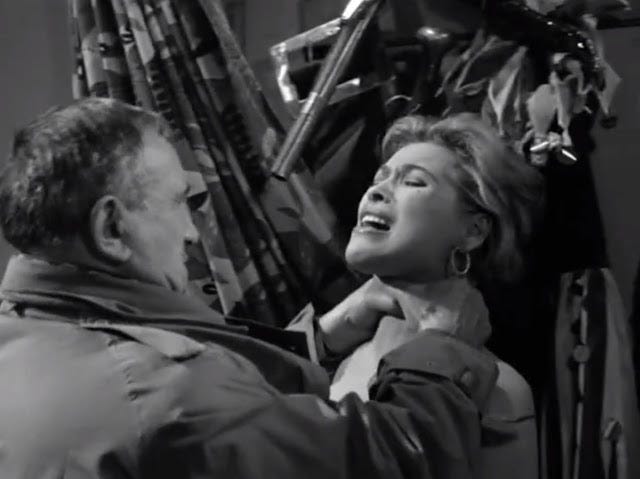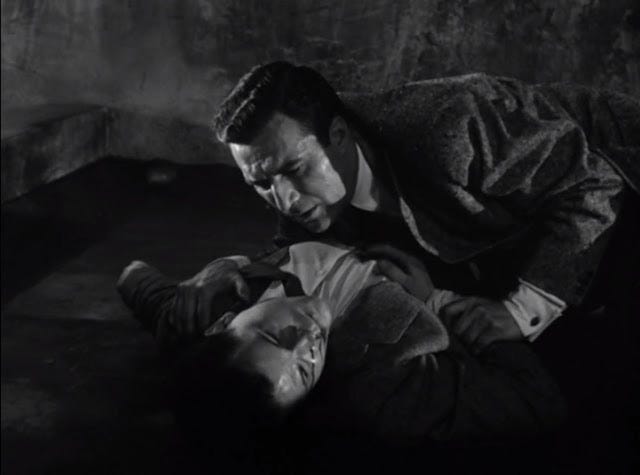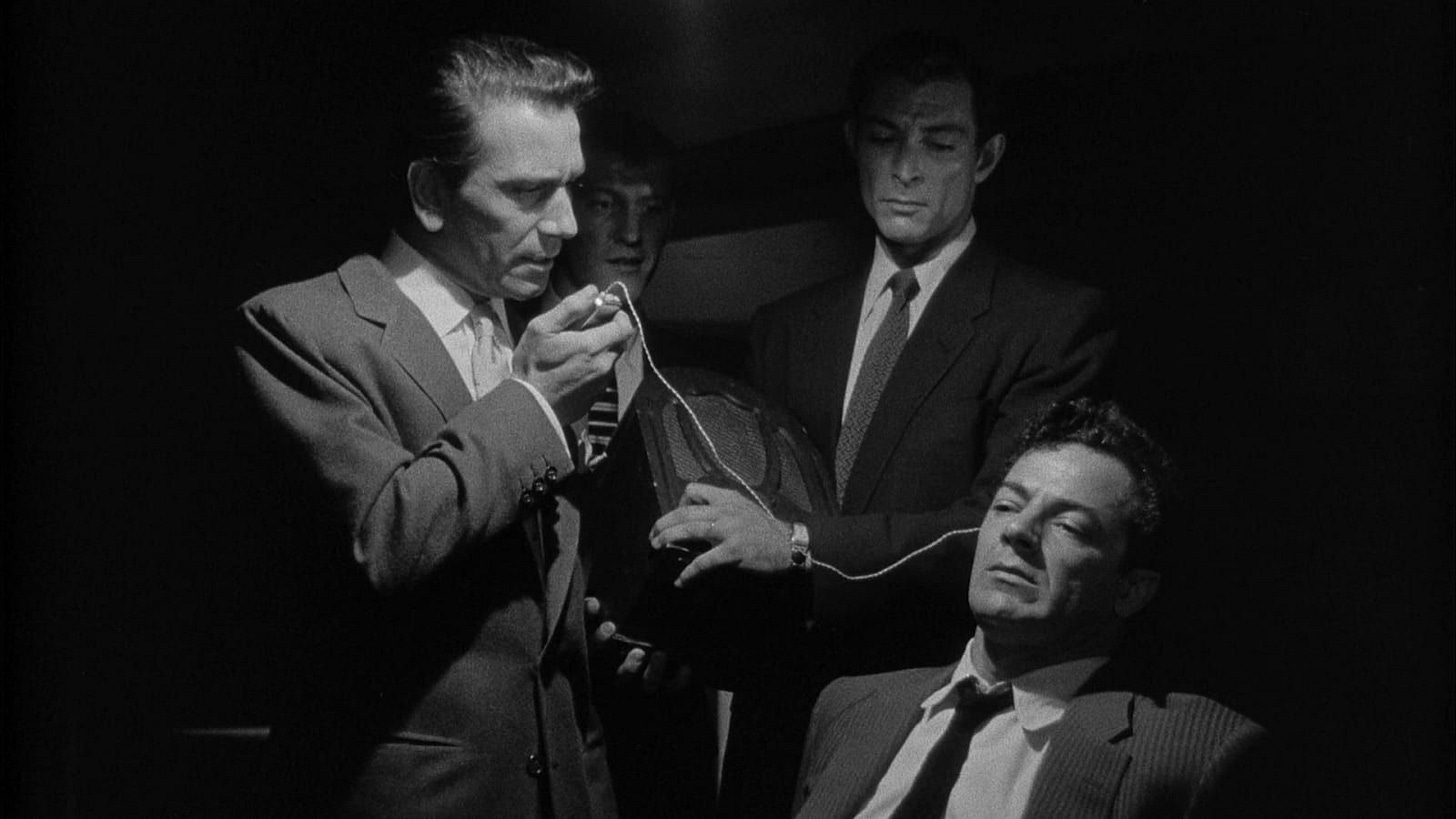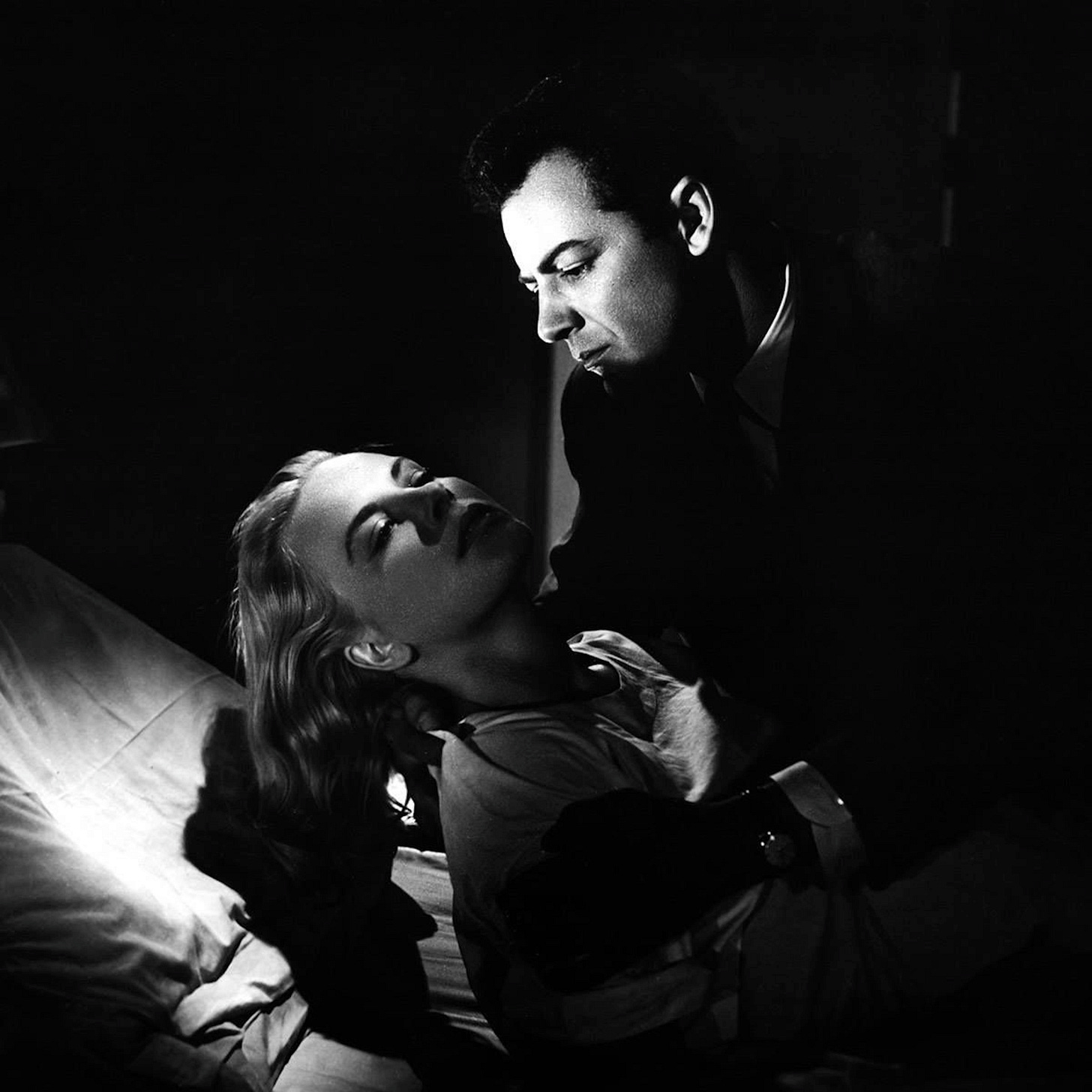Is there "la différence" between criminals & cops?
FRANCO-AMERICAN NOIR's 3RD PAIRING ZEROES IN ON TOXIC MASCULINITY
WE’ve seen so many harrowing stories in America of late revolving around “bad cops” that I won’t elaborate on it here—the facts speak for themselves. Film noir aficionados know, however, that their favored genre was onto such occurrences back in the 1950s: the “bad” or “corrupt” policeman became a staple of post-Blacklist noir from 1952 through to the end of the American cycle (commonly cited as concluding with Orson Welles’ TOUCH OF EVIL in 1958, a film with a literally outsized version of the “bad cop” in Hank Quinlan).
Only a few of these films, however, take the character one step further and posit a more explicit comparison to the criminals these cops are chasing. America’s production code made it difficult to overtly equate cops and criminals, however, but noirs in America definitely inched their way toward that stance. The film that does much to tip that balance is THE BIG COMBO (1955), where we’re just not sure how far Leonard Diamond (Cornel Wilde) will go in his obsessive pursuit of sadistic crime boss Mr. Brown (Richard Conte).
Diamond is also obsessed with Mr. Brown’s girl, Susan Lowell (played by Wilde’s real-life wife, Jean Wallace), to an alarming degree. Director Joseph H. Lewis, most famous for his criminal-lovers-on-the-run noir GUN CRAZY (1950), ups the ante here with respect to self-destructive psychology, spreading it around like a drunken farmer over-fertilizing his crops. And to ensure that all of what we see is baked into our eyes, he employs American noir’s most flamboyant photographer, John Alton, to collide chiaroscuro and grayscale in a nocturnal haze of claustrophobic, cat-and-mouse-fueled squalor.
For me, THE BIG COMBO is Lewis’ greatest achievement, even if it is forced to ultimately back away from its initially provocative psychological equation of cops and criminals. The extreme “noir style” employed by Alton seems to be an attempt to mitigate this—to keep the audience from noticing how the film is backing away from its provocative initial premise.
WHICH is why it’s extremely productive to couple it with RAFLES SUR LA VILLE (France, 1958) as we seek more aspects of “la différence” between American noir and French noir in the three double features playing at the 4-Star Theater this weekend in our FRANCO-AMERICAN NOIR series.

It’s not surprising that the French director who takes us all the way to such an explicit, overt equation is Pierre Chenal, the wayward “gateway agent” of French film noir, a director still in need of a full re-evaluation. In fact, I’m going to go ahead and suggest that Film Forum’s esteemed Bruce Goldstein seriously consider an “auteurist” retrospective for Chenal that would take us back to the mid-1930s—when he was instrumental in pushing French noir forward in several parallel sub-genres—and then move us through his wayward, WWII-shattered career, with reevaluations of works such as THE DEVIL AND THE ANGEL (1946, terribly underrated), NATIVE SON (1951, a noble effort that’s a bit overrated) and on through to his second return to France in the late 50s, a period capped by RAFLES and his followup film, LA BETE Á L’AFFUT aka THE BEAST AT BAY (1959).
IT is in RAFLES where Chenal gives us the most subversive suggestion about the “toxic male connection” underlying the cat-and-mouse games in play between policemen and criminals. The crime boss “Le Fondu” in RAFLES, as played by long-time legend Charles Vanel, is nothing more or less than a whining infant, who as it turns out stages a prison breakout because he’s irrationally convinced that his long-suffering mistress (Bella Darvi) is cheating on him. Result: all hell breaks loose.

On the side of “the law,” we have Inspector Vardier (Michel Piccoli) who, during the police’s attempt to track down Le Fondu, develops a dangerously psychotic attraction to his new, inexperienced partner’s pretty young wife (Danik Patisson) and looks for ways to put his partner in harm’s way in order to clear a path for himself! (Needless to say, this is not a practice that’s covered in police procedure manuals…)
The look you see on Patisson’s face will tell you that Chenal, unlike Lewis, does not back down from following his hoarier instincts just as far as he can in service of his perverse and ironic premise.
RAFLES SUR LA VILLE is a perfect example of what Mick LaSalle rightly noted about French noir all the way back in 2014 when we first initiated our FRENCH HAD A NAME FOR IT festivals at the Roxie (2023’s series will be our tenth). He noted that French noir was bolder and more no-nonsense in exploring the seamier (and often imponderable) side of human behavior—and, indeed, this is one of the most important components of “la différence” that I hope you’ll notice when you take in our three FRANCO-AMERICAN NOIR double features.
Thanks to Adam Bergeron for bringing FRANCO-AMERICAN NOIR to the 4-Star Theater.
Here are links to the articles about our first two double features (POSTMAN ALWAYS RINGS TWICE/LE DERNIER TOURNANT and DECOY/LA FILLE DU DIABLE). We hope you’ll strongly consider joining us for all three double features!
For tickets to any & all shows, please visit the Midcentury Productions website where you’ll find schedule information and a link for ticket sales.






